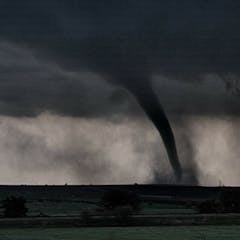
Artículos sobre Weather forecasting
Mostrando 1 - 20 de 120 artículos

Weather forecasting is improving at a great rate, even though climate change could be making it tougher.

Projections show that there’ll be Indian Ocean dipoles in the future – and that means more rainy days, and more extreme rainfall.

A deadly hurricane developed in just 12 hours.

More than 800 lives were lost in the Royal Charter storm but it also led to improvements in weather forecasting.

Local communities need to be warned more clearly and effectively if there is a threat of a storm surge and of coastal flooding.

Three economists looked at years of temperature and death data and calculated the costs when forecasts miss the mark.

An El Niño weather-warming phase is underway in the Pacific – but what does this mean for the weather in Europe?

The 2021 Pacific Northwest heatwave outstripped even the most severe climate prections. A new study simulated 45,000 years of weather at Seattle Tacoma airport to try and figure out why.

Turbulence strong enough to pose an injury risk could be set to double or triple in frequency in the future.

If greenhouse gas emissions continue at a high rate, breadbaskets of Europe and North America will see a 50% chance of a flash drought each year by the end of this century.

Nigeria is expected to experience severe flooding this year. With proper planning and management its impact may not be so devastating.

Autumn extreme fire weather around Cape Town in South Africa has become 90% more likely in a warmer world.

Researchers are turning to computer models, drones and other methods to improve tornado forecasting.

Machine learning may not seem to have much connection with wildlife, but it’s starting to play a central role in bird conservation.

Not all La Niñas are wet, nor El Niños dry – especially if you live in Sydney. So here’s how to interpret what an El Niño forecast means for you.

Unprecedented droughts leave the subsurface drier than usual, affecting water supply in subsequent years.

Flash droughts can develop within a few weeks, causing water shortages, damaging crops and worsening fire risks.

High humidity, terrain and wind make rain forecasting particularly tricky in the tropics.

The Met Office issued its heatwave warning six days before the mercury peaked – potentially saving many lives.

Would you trust a weather forecast made by a machine that had learned how weather systems behaved by reviewing thousands of past weather maps?
